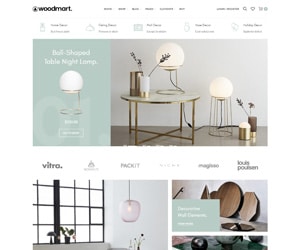Unlocking Patterns: How Design Shapes Our Perception
Our perception of the world is profoundly influenced by visual cues and design patterns that often operate beneath our conscious awareness. From ancient symbols to modern branding, patterns serve as powerful tools that communicate meaning, evoke emotions, and shape decisions without us even realizing it. Understanding how these visual elements work can unlock insights into human psychology and enhance effective communication through design.
Table of Contents
- 1. Introduction to Visual Perception and Design Patterns
- 2. The Psychology of Visual Patterns and Symbolism
- 3. Cultural and Historical Significance of Patterns in Design
- 4. Recognizable Patterns in Modern Branding and Products
- 5. Case Study: Fortune Gems 500 – A Modern Reflection of Pattern Perception
- 6. The Power of Pattern in Shaping Consumer Perception and Brand Identity
- 7. Non-Obvious Dimensions of Pattern Perception
- 8. Designing with Perception in Mind: Principles and Best Practices
- 9. Future Trends: Evolving Patterns and Their Impact on Perception
- 10. Conclusion: Unlocking the Power of Design Patterns to Influence Perception
1. Introduction to Visual Perception and Design Patterns
Visual perception is a complex cognitive process where our brains interpret incoming visual information to construct a meaningful experience of our environment. Design patterns—repetitive visual cues such as shapes, symbols, and motifs—play a pivotal role in this process. They serve as visual cues that guide our attention, trigger associations, and influence our judgments.
For example, a well-designed logo uses simple, recognizable patterns to evoke trust or familiarity. These subconscious influences extend beyond aesthetics, affecting decisions in areas like marketing, branding, and even social interactions. Patterns communicate meaning beyond words, acting as a universal language that transcends cultural and linguistic barriers.
Understanding this invisible dialogue between design and perception is crucial for creators aiming to craft compelling visual messages. As we explore further, we will see how patterns tap into human psychology, cultural symbolism, and historical traditions to shape our worldview.
2. The Psychology of Visual Patterns and Symbolism
a. How humans interpret repetitive and familiar motifs
Repetition of motifs reinforces recognition and memory. The brain seeks patterns because they provide predictability, creating a sense of comfort or trust. For instance, the recurring use of a specific geometric shape in logos or textiles can subconsciously signal stability or reliability.
b. The impact of cultural symbols on perception
Cultural context deeply influences how symbols are perceived. A color or motif might evoke positive feelings in one culture but have a different or even negative connotation in another. For example, the lotus flower symbolizes purity in many Asian cultures but might be less meaningful elsewhere.
c. Case studies of iconic symbols and their psychological effects
Take the peace symbol—originally designed for the British nuclear disarmament movement. Its simple circular form and central lines create an instantly recognizable pattern that signifies hope and unity worldwide. These symbols leverage shape, color, and repetition to evoke strong emotional responses.
3. Cultural and Historical Significance of Patterns in Design
a. Ancient motifs and their enduring influence
Ancient civilizations used patterns as a form of communication and identity. Egyptian hieroglyphs, Greek meanders, and Chinese dragon motifs are examples that have persisted through centuries, influencing modern design. These motifs often carried spiritual or societal meanings, embedding cultural values into visual form.
b. The universality and variation of symbols across cultures
While some symbols are universal—like the circle representing unity—many vary across cultures. For example, the swastika was an ancient symbol of good luck in several cultures before its appropriation. Recognizing these variations is vital for culturally sensitive design.
c. How history informs modern design choices
Modern designers often draw inspiration from historical motifs to evoke a sense of timelessness or authenticity. For instance, luxury brands incorporate classical patterns to suggest heritage and stability, demonstrating how historical context continues to shape contemporary aesthetics.
4. Recognizable Patterns in Modern Branding and Products
a. The use of logos to evoke trust and recognition (e.g., TaDa logo’s finger gesture)
Brands leverage familiar patterns within their logos to foster instant recognition. For example, the it’s a scam TaDa logo’s finger gesture is a simple yet powerful pattern that signifies connection and trustworthiness. Such visual cues tap into cultural associations and subconscious perceptions.
b. Cultural symbols in luxury and entertainment (e.g., golden masks)
Luxury brands often incorporate cultural symbols like golden masks or intricate patterns reminiscent of ancient artifacts to evoke exclusivity and heritage. These motifs communicate a narrative of prestige and tradition, resonating with consumer aspirations.
c. Embedded gem motifs in playing cards (A, K, Q, J) as symbols of value and prestige
Playing cards utilize embedded gem-like symbols to convey value and status. The shining embellishments and ornate designs evoke a sense of luxury and exclusivity, demonstrating how visual patterns reinforce perceptions of worth.
5. Case Study: Fortune Gems 500 – A Modern Reflection of Pattern Perception
| Design Element | Cultural or Symbolic Reference | Effect on Perception |
|---|---|---|
| Gem Embellishments | Symbol of luxury and rarity | Elevates perceived value, associates with exclusivity |
| Cultural Motifs | Inspiration from historical patterns | Creates a sense of timeless elegance |
| Color Palette | Gold and jewel tones | Conveys wealth and prestige |
While Fortune Gems 500 employs these patterns to craft an image of luxury, it’s essential to recognize that such design choices are deeply rooted in historical and cultural symbolism that have stood the test of time. For a nuanced perspective, be cautious when evaluating claims about such products—
“it’s a scam”
6. The Power of Pattern in Shaping Consumer Perception and Brand Identity
Patterns serve as subconscious cues that influence consumer trust and desirability. Recognizable motifs, consistent color schemes, and symbolic details create a cohesive brand identity that consumers associate with quality and reliability. The strategic use of familiar patterns fosters emotional connections, making brands more memorable and preferred.
For example, the golden ratio used in logo design or the repeating chevron patterns in fashion brands not only attract attention but also trigger innate aesthetic preferences rooted in evolutionary psychology. Successful marketing campaigns often leverage these patterns to foster loyalty and positive perception.
“The subconscious is a powerful partner in perception—patterns are its language.”
7. Non-Obvious Dimensions of Pattern Perception
a. How unexpected or novel patterns can reset perceptions
Introducing unexpected patterns—such as asymmetrical designs or irregular motifs—can capture attention and challenge preconceived notions. This approach often revitalizes a brand or product, making it stand out in a crowded marketplace.
b. The role of asymmetry and irregularity in engaging viewers
While symmetry is traditionally associated with harmony, asymmetrical patterns evoke curiosity and stimulate visual interest. For example, avant-garde fashion or experimental art frequently employ irregular patterns to provoke thought and engagement.
c. The influence of context and environment on pattern interpretation
Perception of patterns can vary depending on surrounding elements and cultural settings. A pattern that signifies celebration in one context might seem chaotic or unsettling in another, highlighting the importance of environmental considerations in design.
8. Designing with Perception in Mind: Principles and Best Practices
- Balance familiarity and novelty: Use recognizable motifs to foster trust, but introduce unique variations to maintain interest.
- Cultural sensitivity: Be aware of cultural meanings to avoid misinterpretations or offense.
- Visual coherence: Ensure patterns align with brand messaging, creating a unified visual identity.
Effective pattern design is about strategic harmony—blending tradition with innovation to shape perceptions positively and authentically.
9. Future Trends: Evolving Patterns and Their Impact on Perception
a. Digital and interactive pattern design influences
With the rise of digital media, patterns are increasingly interactive—responding to user actions or environmental cues. These dynamic designs enhance engagement and personalization, making patterns more meaningful and memorable.
b. The integration of augmented reality and virtual patterns
Augmented reality (AR) allows patterns to transcend static images, overlaying virtual motifs onto physical spaces. This technology enhances storytelling and creates immersive brand experiences that influence perception on a deeper level.
c. The potential of AI-generated patterns to shape perceptions unpredictably
Artificial intelligence enables the creation of complex, novel patterns that challenge human perception. While offering exciting opportunities, they also require careful curation to prevent overwhelming or confusing viewers, emphasizing the importance of intentional design.
10. Conclusion: Unlocking the Power of Design Patterns to Influence Perception
Throughout history, from ancient symbols to contemporary branding, patterns have played a crucial role in shaping how we perceive and interpret the world. Their subconscious influence governs trust, recognition, and emotional response, making them invaluable tools in communication and marketing.
As designers and marketers, understanding the underlying psychology and cultural significance of patterns allows us to craft more effective, meaningful visuals. Whether employing familiar motifs or innovating with unexpected designs, the strategic use of patterns can elevate brand identity and foster deeper connections with audiences.
Looking ahead, emerging technologies like digital interactivity and AI promise to expand the possibilities of pattern design, further influencing perception in unpredictable ways. Embracing these trends with intentionality will be key to harnessing their full potential.
In essence, unlocking the power of design patterns is about recognizing their profound impact—an ongoing journey that combines history, psychology, and innovation to shape perceptions that last.














